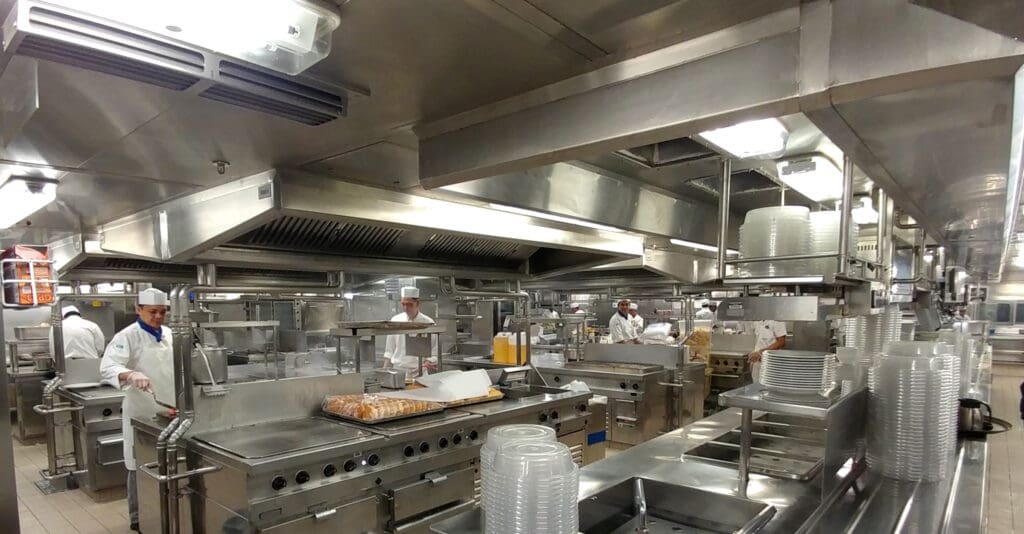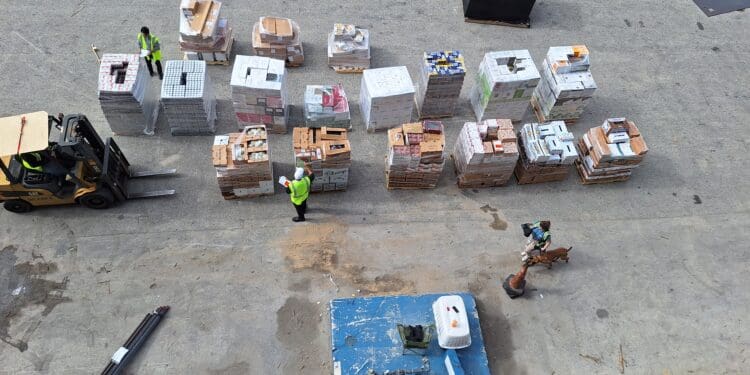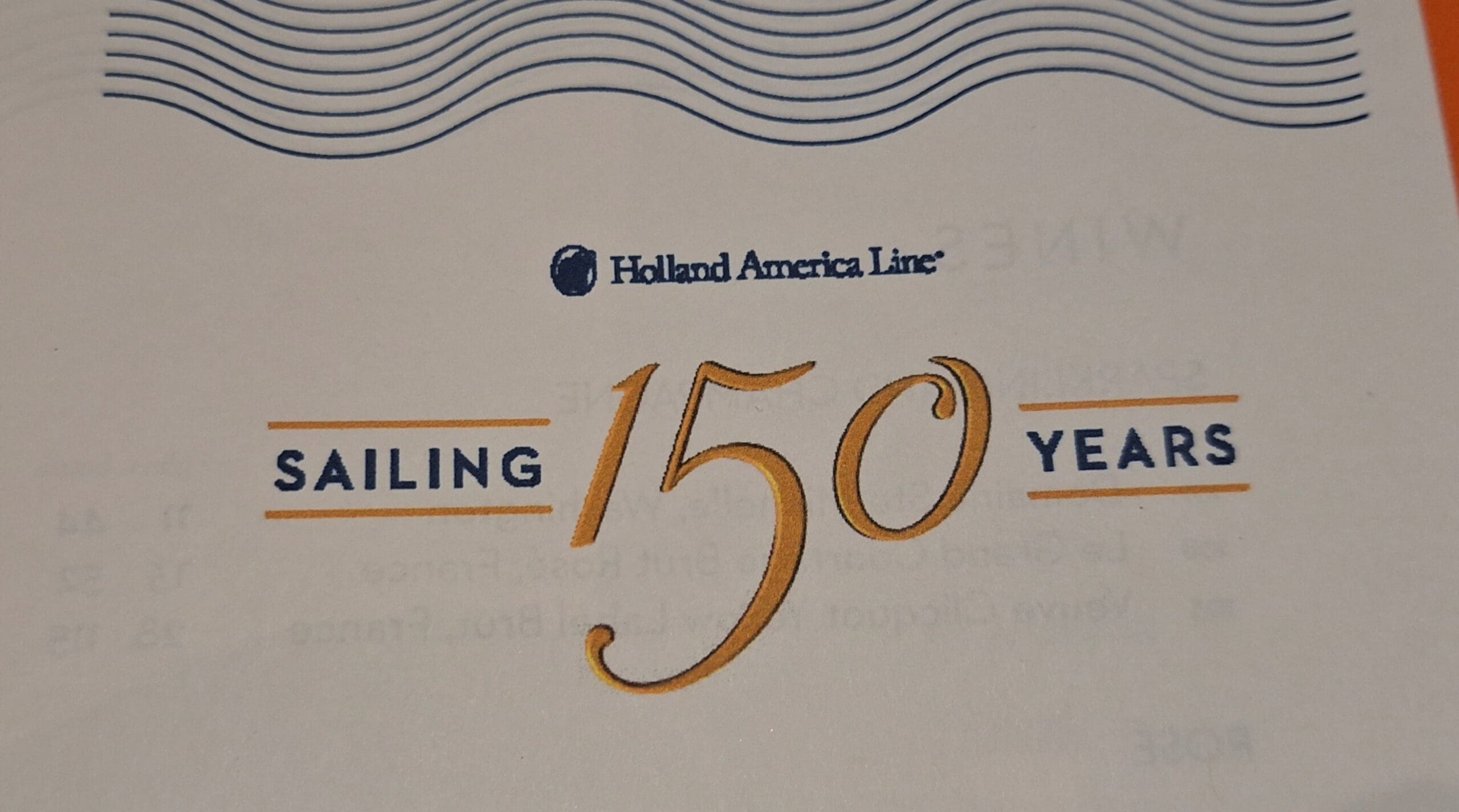Advertiser Disclosure: Eye of the Flyer, a division of Chatterbox Entertainment, Inc., is part of an affiliate sales network and receives compensation for sending traffic to partner sites, such as CreditCards.com. Some or all of the card offers that appear on the website are from advertisers. Compensation may impact how and where card products appear on the site. This site does not include all card companies or all available card offers. Opinions, reviews, analyses & recommendations are the author’s alone, and have not been reviewed, endorsed, or approved by any of these entities. Some of the links on this page are affiliate or referral links. We may receive a commission or referral bonus for purchases or successful applications made during shopping sessions or signups initiated from clicking those links.
Feeding the amount of people sailing on a ship is no easy task. We’re talking up to 8,000 guests, ASIDE from the crew (who, believe it or not, also eat!).

Of course, a big part of the logistics involved in running a floating hotel is the food preparation, and of course the shopping for it. Cruise Ships have massive provision areas, able to safely store huge amounts of food and food ingredients. If you ever have the opportunity to visit these areas (in a Behind The Scenes Tour, for instance), you’ll be amazed at how the cruise lines ensure there’s always enough food for everyone on board… and then some.

But how do these items end up on board? Most food preparation items are loaded up on the embarkation ports. In addition to a generally huge process of disembarkation of previous guests, preparing the ship for the new batch within only a few hours (there’s normally less than a 2-hour period between the time the last guest disembarks and the first guest embarks!) and checking in and embarking the new guests, an enormous amount of pallets containing the food people will consume throughout the cruise will be loaded up. You might miss this process due to the excitement of your starting adventure, but trust me, it’s happening… and it’s big.
Both land-based staff and shipboard crew are involved in properly loading, inventorying, securing and storing the items to be used throughout the cruise. Without a glitch, they ensure that dairy products aren’t out of refrigeration longer than they can be, no eggs are broken, and every single vegetable is kept looking fresh and tasty.
But embarkation ports aren’t the only place where food items are loaded. If during the cruise, certain items are more accessible, or even cheaper to obtain, cruise lines will opt for locally sourcing certain things. It is, after all, a business that needs to save on costs and turn a profit. In most cases, this is limited to certain fruits or ingredients that might be more plentiful in some of the countries it will stop at. For instance, strawberries are generally brought on in some of the Caribbean islands where they abound.

As you might suspect, there are longer cruises, with a few days at sea, up to 10 in a row, where no food can be loaded. So there’s a very real chance you’ll be eating food that’s a few days old. But with the storing methods cruise ships have come to master, you likely won’t know the difference. And yes, cruise ships do run out of certain items from time to time, and, well, they’re very good at offering alternatives.
All of this pales in comparison to the process of cooking the food, making it taste great enough that you’ll choose that cruise line over others, and ensuring the presentation is attractive and cohesive. – ThatGuy (onboard)
Advertiser Disclosure: Eye of the Flyer, a division of Chatterbox Entertainment, Inc., is part of an affiliate sales network and receives compensation for sending traffic to partner sites, such as CreditCards.com. Some or all of the card offers that appear on the website are from advertisers. Compensation may impact how and where card products appear on the site. This site does not include all card companies or all available card offers. Opinions, reviews, analyses & recommendations are the author’s alone, and have not been reviewed, endorsed, or approved by any of these entities. Some of the links on this page are affiliate or referral links. We may receive a commission or referral bonus for purchases or successful applications made during shopping sessions or signups initiated from clicking those links.
Responses are not provided or commissioned by the bank advertiser. Responses have not been reviewed, approved or otherwise endorsed by the bank advertiser. It is not the bank advertiser's responsibility to ensure all posts and/or questions are answered.












Well duh! Have you seen the level of obesity of the average cruise customer?